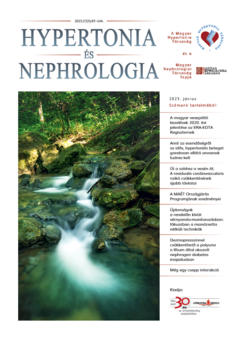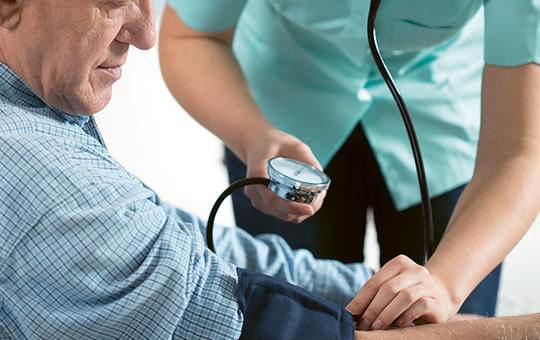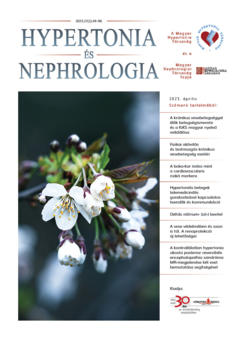The eLitMed.hu medical portal uses computer cookies for convenient operation. Detailed information can be found in the Cookie-policy.
Specialities
Immune Oncology
Post-acute sequelae of COVID-19 in young adults: Mental fatigue and decreased cognitive flexibility
Post-acute sequelae of COVID-19 (PASC) describes the occurrence of persistent symptoms following COVID-19 infection. Neurological and psychiatric symptoms may include fatigue, post-exertional malaise, cognitive complaints, sensorimotor symptoms, headache, insomnia. The aim of this study was to evaluate the long-term effects of COVID-19 infection on mental fatigue and cognitive flexibility in young adults.
[Education of Healthcare Professionals about Stomato-oncology Screening Tests]
[In Europe Hungary has the highest prevalence of oral cancer and mortality. That aforementioned case draws attention to the importance of oral screening tests because these types of tumors can be cured easily if we catch them in time. Stomato-oncology screening tests are one of the most painless and easiest examinations considering that it can be effectively done by non-professionals and healthcare workers outside of dentistry. This gives us the opportunity to filter out tumors in early states. This summary publication demonstrates the steps of extra- and intraoral examination and escalates to noticing periodontal deseases and oral cancer.]
[The path to the heart through the kidney. New perspectives for reducing residual cardiovascular risk – pathways and mediators of mesodermal cross-talk]
[The continued high morbidity of cardiovascular diseases justifies the exploration of “residual” risk factors. During embryonic development, the cardiovascular organs, bones, muscles, kidney, and adipose tissue differentiate from the mesoderm, the remaining humoral and mechanical communication between cell lines partly explains the phenomenon of residual cardiovascular risk, and partly leads to the delineation of new therapeutic targets. Among the common factors in the pathogenesis of osteoporosis and atherosclerosis, inflammation can be highlighted, which makes the beneficial effects of biological therapy treatment understandable. The Klotho system and the AGE-RAGE axis are responsible for age-related systemic changes. Cardiokines, myokines, osteokines, adipokines, and hepatokines are molecular mediators of complex interactions between individual organs. In particular, the cardio-renoprotective effects of the GLP-1RA and SGLT2i drug classes already used in diabetology are part of the systemic beneficial effect. Similarly, blocking mineralocorticoid receptors with finerenone has a generalized anti-inflammatory, anti-oxidant and anti-fibrotic effects. Regular exercise has always been recommended for cardiovascular patients, but now more and more mechanisms are becoming known that highlight the role of skeletal muscle in regulating the entire metabolism. Simultaneous use with the diet, it can be a simple and effective method to control the progression of cardiovascular disease.]
[Angiotensin-convertase inhibitor or angiotensin-receptor blocker should be the first choice in treating hypertensive patients?]
[The inhibitors of RAAS (ACE-inhibitors and ARBs) are equally first-choice agents according to both the overseas and European (including the Hungarian) hypertension-guidelines. Nevertheless, medical practitioners prefer rather the ACE-inhibitors than the ARBs. This review aims to show the differences, the available direct comparisons, the meta-analyses as top evidences and the real-world experiences between the two drug classes. Based on these, there is no significant difference in the cardiovascular outcomes (myocardial infarction, heart failure, and stroke) of the groups treated with ACE-inhibitors or ARBs respectively. However, adverse events, which may interrupt the treatment, like cough or angioneurotic oedema joining sometimes the ACE-inhibitor therapy, were much more frequent than during the ARBs administration.]
[For kidney protection and beyond. New possibilities of renoprotection]
[As a result of intensive basic research and clinical trials of the last decade, drugs with a new mechanism of action of renoprotection have entered clinical practice. Following the drugs that act by inhibiting the renin-angiotensin system, which are already considered the "gold standard", the new drugs originally designed and introduced for the treatment of diabetes mellitus have expanded our therapeutic armamentarium, such as glucagon-like peptide-1 receptor agonists (GLP-1RA), with evidence of reducing macroalbuminuria and serum creatinine in diabetic nephropathy and sodium glucose cotransporter-2 (SGLT-2) inhibitors, showing evidence of nephroprotection in patients with diabetic nephropathy as well as in CKD with non-diabetic etiology. Well-designed clinical trials have also confirmed the cardiovascular protective effect of these drugs, and in this context, a number of proven and potential mechanisms have been described that may play a role in the effects described above. The observation that the nephroprotection originally proven in diabetes is also valid for SGLT-2 inhibitors in non-diabetic chronic kidney patients is particularly promising, providing a new therapeutic tool to slow down the progression of chronic kidney disease. In the future, the mechanism of action of these drugs needs to be further clarified. The final goal is to verify their effectiveness in large population based studies including patients from the "everyday life".]
1.
Clinical Neuroscience
[Headache registry in Szeged: Experiences regarding to migraine patients]2.
Clinical Neuroscience
[The new target population of stroke awareness campaign: Kindergarten students ]3.
Clinical Neuroscience
Is there any difference in mortality rates of atrial fibrillation detected before or after ischemic stroke?4.
Clinical Neuroscience
Factors influencing the level of stigma in Parkinson’s disease in western Turkey5.
Clinical Neuroscience
[The effects of demographic and clinical factors on the severity of poststroke aphasia]1.
2.
Clinical Oncology
[Pancreatic cancer: ESMO Clinical Practice Guideline for diagnosis, treatment and follow-up]3.
Clinical Oncology
[Pharmacovigilance landscape – Lessons from the past and opportunities for future]4.
5.








